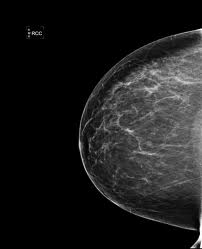 The latest Journal of the American Medical Association (JAMA, April 2, 2014) has a dense review article, “A Systematic Assessment of Benefits and Risks to Guide Breast Cancer Screening Decisions,” that tackles the continuing question of mammography for women and how much the process is helpful in saving lives compared to its costs in unnecessary diagnostic procedures and even unneeded treatment for tumors that never would have harmed the women. Unfortunately, I am not sure how much this review really helps us.
The latest Journal of the American Medical Association (JAMA, April 2, 2014) has a dense review article, “A Systematic Assessment of Benefits and Risks to Guide Breast Cancer Screening Decisions,” that tackles the continuing question of mammography for women and how much the process is helpful in saving lives compared to its costs in unnecessary diagnostic procedures and even unneeded treatment for tumors that never would have harmed the women. Unfortunately, I am not sure how much this review really helps us.
Why Is There Not Clarity?
As cited in the review:
- Many studies do show mammography saves women’s lives, but the benefits are modest especially in younger women (40-60). And some studies, such as recent Canadian long-term studies, found no benefit in mortality from mammography over several decades.
- The collateral cost of mammography has been substantial, with repeated films and often biopsies, not to mention the anxiety of the process, with the likelihood approaching 60% that extra studies or biopsy would be required in 10 years of screening.
- The number of women who need to undergo mammography regularly to result in a single saved life may be as high as 2000, and may not be much lower than 3-400 in higher risk groups. That is a lot of mammograms and attendant biopsies.
- Many of the truly randomized trials are old, when mammography techniques were not so accurate but also when treatment was less effective. More recently, with much improved treatment, the criticality of the earliest possible detection is becoming less at the same time as detection techniques such as 3D breast tomography are becoming more precise and may be able to reduce the number of breast biopsies that follow from imaging.
Why There May Not Be Clarity Anytime Soon
We have been arguing the issue of the utility of mammograms for at least two decades. I think we will continue to do so for some time. Why?
First, any outcomes study takes years to perform, a decade or more. By the time it is published the imaging techniques are in a new generation, the treatments have advanced, and much of what has just been studied is often considered of historic interest only and not relevant to current decision-making. So both sides of the equation, imaging or other screening technique and the breast cancer treatments, are moving targets.
Second, and perhaps most important, are the known unknowns, to borrow a Donald Rumsfeld phrase: How many of the cancerous breast lesions that have been treated, especially DCIS (ductal carcinoma in situ) and some apparently low-grade invasive cancer, would have remained indolent and never needed treatment? The review cites estimates close to 20% for such ultimately unneeded cancer treatment, but we still have no specific tool to tell the individual woman with DCIS, for example, whether she would be safe forgoing treatment initially or not.
There seems to me to be some analogy with men’s prostate cancer here, in how to determine which low-grade or earliest-stage cancers need to be treated at all. Now many men undergo what is called “active surveillance” of their low-grade prostate cancer, with regular data-gathering but no surgery or radiation treatment. This appears to be successful over about a decade or more now, opening up a real choice for men and, at the same time, improving the logic for using less-than-perfect screening tests which no longer have to lead directly to definitive and possibly harmful interventions. I do not believe we have yet developed such a process or body of data for women’s DCIS or related low-grade breast cancer.
So What to Do?
We muddle through as rationally as we can, in the absence of definitive scientific data. My sense is as follows:
We should continue to get a basic assessment as to whether each woman is relatively high or low risk for breast cancer. High risk is especially conveyed by a strong family history of first-degree relatives with breast cancer or other genetically related cancers, and to a lesser extent through very early or late menstruation, non-bearing of children, or combined hormone therapy for extended periods after menopause. The Gail model of risk assessment can be of some use.
Women with higher risk of breast cancer may want to start mammography in their forties and continue on more or less an annual basis through their sixties. Other women may well wait till age 50 to begin mammograms and could safely follow a less intensive every-other-year program, which is supported by many studies as equivalently effective to annual mammograms and which is the norm in most European countries. It is hard to say just what to do for women over 75 because, incredibly, we have had no randomized trials of mammography in that age group, but my sense is we continue as for younger women. But after 80-85? Many women in good health decide not to bother, and I don’t object. No data exists.
Most important, we should all look out for any studies that try to tackle the possible overtreatment of DCIS by developing rational active surveillance options. I’ll certainly be supportive of participation. We’ll of course discuss carefully if that situation arises.
Finally, after my comments above, here is the text of the study’s recommendations for women on mammography:
- Some cancers will be missed, and some women will die of breast cancer regardless of whether they are screened.
- Many cancers will be found, but most women diagnosed with breast cancer will be cured regardless of whether the cancer was found by a mammogram.
- Some cancers that are found would have never caused problems. This is called “overdiagnosis.”
- Often, women are called back for further testing because of an abnormality that is not cancer; this is called a “false-positive” result.
- Studies of the benefits and harms of mammography have limitations and inconsistent results. The numbers reported below are estimates based on what most experts consider the best available evidence, but uncertainty about these estimates remains.
- Mammography decreases the number of women who will die from breast cancer. This benefit is greater for women who are at higher risk for breast cancer based on older age or other risk factors such as family history.
- The number of women whose lives are saved because of mammography varies by age. For every 10 000 women who get regular mammograms for the next 10 years, the number whose lives will be saved because of the mammogram by age group is approximately
- 5 of 10 000 women aged 40 to 49 years
- 10 of 10 000 women aged 50 to 59 years
- 42 of 10 000 women aged 60 to 69 years
- If your breast cancer risk is higher than average, you may benefit more from a mammogram than someone with average risk.
- About half or more of women who have a mammogram yearly for 10 years will have a false-positive mammogram, and up to 20% of these women will need a biopsy. If you do decide to have a mammogram, you can anticipate that you will have at least 1 false-positive finding for which you are called back for additional images and perhaps a biopsy. Most of these findings are false alarms.
- For some women undergoing regular screening, the mammogram may find an invasive cancer or noninvasive condition (ie, ductal carcinoma in situ) that would never have caused problems (“overdiagnosis”). We cannot tell which these are, so they will be treated just like all other cancers. Experts are uncertain of how frequently this happens, but estimates suggest that if a woman undergoing a screening mammogram is diagnosed with cancer or ductal carcinoma in situ, there is about a 19% chance that the cancer is being overdiagnosed, and she will receive unnecessary treatment.
- Experts recommend that women aged 50 to 74 years undergo a screening mammogram every 2 years.
- Whether you are likely to benefit from starting mammograms earlier or having them more frequently depends on your risks for breast cancer and your values and preferences.
- Each woman may feel differently about the possibility of having a false-positive result or being diagnosed with and treated for cancer that might not have caused problems. It is important for you to consider what these experiences might mean for you. It is also important to consider how you might feel if you decide not to undergo screening mammography and you are later diagnosed with breast cancer, even if the likelihood that mammography would have made a difference is small.

